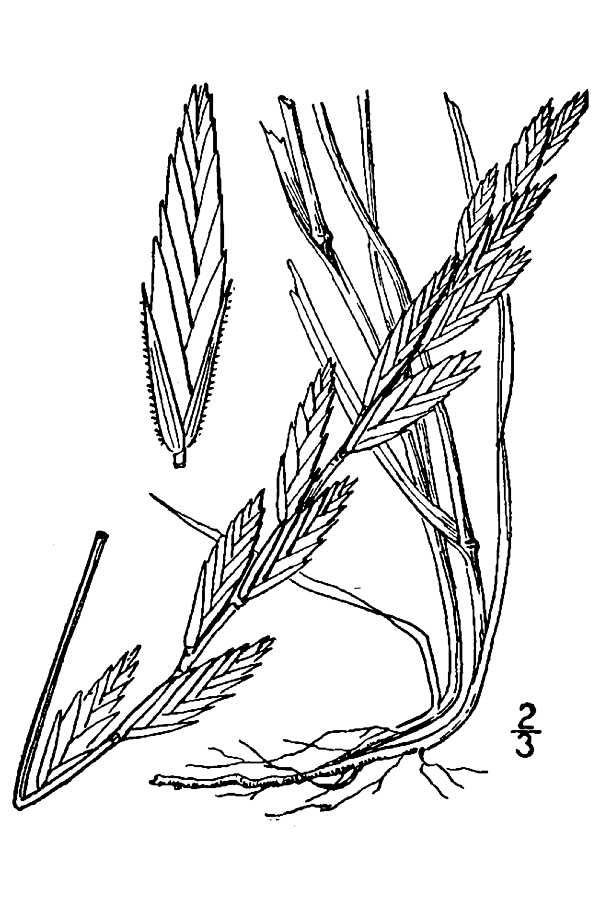Western Wheatgrass

Common Name(s):
Western Wheatgrass
Scientific Name:
Pascopyrum smithii (Rydb.) A. Löve
Scientific Name Synonyms:
Agropyron smithii Rydb.
Symbol:
PASM
Description:
Life Span: Perennial
Origin: Native
Season: Cool
Growth Characteristics: An erect, rather coarse grass, 1 to 2 ½ feet tall, with numerous rhizomes. Its growth starts when daytime temperatures are 12 - 13 degrees C. It is dormant in the summer, and begins growth again in the fall if soil moisture is adequate. Western wheatgrass reproduces from seeds and rhizomes.
Seedhead: Dense, narrow spike, 2 to 6 inches long; spikelets overlapping, 3/8 to ¾ inches long, contain 6 to 10 florets; 1 or sometimes 2 spikelets per rachis node; glumes glabrous, rigid, gradually tapering from base into short awns; lemmas mostly glabrous, awn-tipped.
Leaves: Glabrous and glaucous, with bluish-green color due to a grayish waxy bloom; leaf blades flat but rolled when dry, 1/8 to ¼ inch wide, 4 to 10 inches long, rather stiff, pointed at the tips, ridged and rough on upper surface; leaves rolled in the bud; ligules very short, membranous, and collar-like; auricles moderately large and clasp the stem.
Ecological Adaptions:
Western wheatgrass is one of Utah's most widespread and versatile perennial grasses. Its range extends from the semi-desert sites up to the mountain sites and into a few high mountain sites. As indicated by the name, it is also widely distributed in the western states. Western wheatgrass is very drought tolerant.
Soils: It occurs on practically all types of soils from sands to clays, from deep to extremely shallow, and in various soil moisture conditions. It can be found on soils that are moderately alkaline or saline. It produces the greatest percentage of the total vegetation when growing on fine textured soils.
Associated Species: Big sagebrush, sandberg bluegrass, Nevada bluegrass, and bluebunch wheatgrass.
Uses and Management:
Western wheatgrass is highly palatable early in the growing season. It produce a high volume of forage under optimum growing conditions, which is of good forage value for all classes of domestic livestock. It has fair forage value for pronghorn and other wildlife. Western wheatgrass cures well, making good winter forage. It tolerates heavy grazing, but responds well to proper use - producing twice as much forage where it is grazed moderately. The seeds provide food for upland gamebirds as well as for songbirds and many small mammals.
Western wheatgrass is outstanding for erosion control because of the extensive fibrous roots and rhizomes. It is an excellent grass for grassed waterways and for vegetative cover on campgrounds, dryland golf fairways, picnic grounds, recreational areas and roadside seedings.
Grazing management where western wheatgrass is one of the key species should aim at moderate use. It will tolerate close grazing at times, provided 60 percent of the top growth remains to maintain the health of the plant. Grazing should be avoided while soils are extremely wet. This is one of the native range plants which responds remarkably well to rest and rotation deferred grazing programs keyed to the more sensitive growth period of the plant (seed stalk formation to seed ripe).

